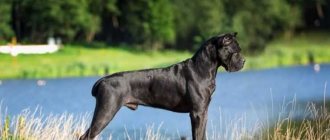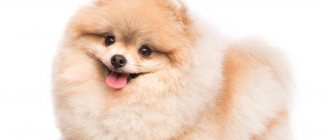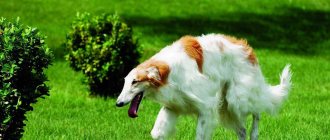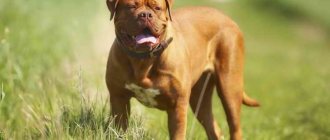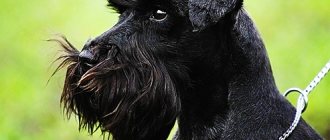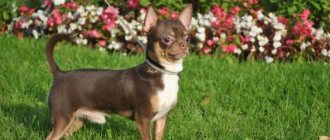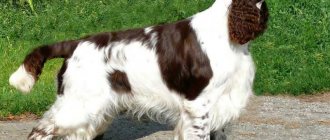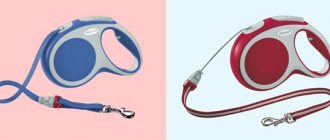Is it possible to create an animal that is as smart, dexterous and strong as a wolf, but at the same time loyal as a dog? It turns out that this is quite possible. And the Wolfhund is a dog that confirms this. This is not to say that the breed is very famous and widespread. But more and more breeders are deciding to get just such a pet.
He doesn't care about snow and frost
History of the breed
The first successful attempts to cross a dog and a wolf were made by the Dutchman Lindert Saarloos - in 1925 he created the Wulfhound breed. Subsequently, similar attempts were made in Czechoslovakia (in 1955), where a cross between a German shepherd and a Carpathian wolf was bred, resulting in a new breed.
Fact! The Czech Wolfhund is also known as the Czech Wolfdog.
Finally, already at the beginning of the twenty-first century, the Russian Wolfhund appeared, a description of the breed will be given below. When creating the breed, a she-wolf and a German shepherd were used (there is also a version that a malamute was used for this). The new breed is the largest of its kind (some believe it is a Yulan dog, but in fact they are different breeds).
Breed standard
Any officially registered breed has certain standards that regulate every little detail in the dog’s appearance. The Wolfhound is no exception.
Head
Proportional, quite powerful, shaped like a blunt wedge. The muzzle is very expressive, with a straight, not too massive nose.
Jaws and teeth
Symmetrical, with 42 firmly set teeth. Two types of bite are acceptable: scissor bite and pincer bite.
Nose
Straight, black.
Eyes
Not too big, slightly elongated. Different shades of brown are possible - from dark to amber.
Ears
Triangular in shape, firmly standing. The tips are slightly pointed.
Neck
Dry, angle relative to the back is about 40 degrees.
Frame
Rectangular, with superbly developed muscles. The back is straight, with a top line that smoothly flows into a wide, but at the same time short, barely raised croup. The chest is powerful and does not reach the elbows.
Limbs
Strong, a little closer.
Tail
Placed high. When the dog is calm, the tail is straight and slightly lowered. When active, it rises and curls slightly - shaped like a donut.
Wool
Thick and straight. There are seals on the inside of the thighs and on the neck. In winter, the coat becomes especially thick, and a powerful undercoat grows, which perfectly protects the pet from cold and wind.
Color
Acceptable colors include black, white and brown. In addition, the color can be almost all shades of the latter.
Wolfhound Kennel
This is interesting! You can sometimes hear about a blue Wolfhund, but this color has never been officially registered.
Disqualifying faults
Any deviations from the standards listed above may result in the dog being disqualified. Also a disadvantage is the discrepancy in size (both too small and huge representatives of the breed) and lack of teeth. If the Wolfhund starts barking or otherwise showing aggression, this will become a significant disadvantage.
Characteristic
The presence of wolf blood makes representatives of this breed truly unique dogs. They are quite large, strong and hardy - such a dog is not afraid of either frost or slush. Breeders note that in their habits they are more reminiscent of socialized wolves than domestic shepherd dogs.
Fearlessness, courage and loyalty - this is all about Wolfhunds. In addition, such dogs have a unique sense of smell and strong hunting instincts, which future owners should remember.
If we take a closer look at the appearance of these handsome guys, the standard mentions the following exterior features:
- rectangular body with well-developed muscles;
- straight and dense coat with seals on the neck and inner thighs. The winter coat is thicker, with a thick undercoat;
- straight back, the top line of which smoothly transitions to a short but wide croup (it is slightly raised);
- muscular chest, not reaching the elbows;
- proportional head in the shape of a blunt wedge;
- expressive muzzle with a straight nose;
- symmetrical jaws with a scissor or pincer bite of 42 teeth;
- small yellow-amber eyes;
- erect triangular ears with sharp tips;
- dry neck (angle relative to the back - approximately 40 degrees);
- strong limbs slightly closer together;
- tail set high. In a calm state, the dog keeps it straight and slightly lowered, and during activity it raises it - it turns out something like a donut.
Did you know? Surprisingly, dogs watch their owners even in their sleep.
As you can see, the wolf “heritage” is clearly manifested in the appearance of Wolfhounds. Many people are also captivated by the ease of the dog’s movements - instantly gaining momentum, such a dog moves very gracefully, barely touching the ground with its paws.
Education and training
The main thing in raising a Wolfhund is to be consistent and firm. From the very first months of life, the pet must understand what it can do and what it cannot do. And there should be no exceptions here. Once you show weakness, you won’t be able to win back positions.
Note! With proper training, the Wolfhound demonstrates no less discipline than the German Shepherd and other service breeds.
In training you need to show special firmness. If you do not teach commands to a puppy, then a mature, and even more so an old dog will be almost uncontrollable. This is not a terrier that can be easily picked up or pulled away if something goes wrong. A sharp mind allows the dog to quickly master commands. Combined with encouragement and sometimes punishment (sometimes this is required for particularly stubborn representatives of the breed), the pet will quickly learn at least basic commands.
Walking, physical activity and rules of safe behavior on the street
You need to walk your Wulfhound as standard, twice a day. It is advisable that one walk lasts at least an hour. At the same time, the pet must move a lot to stay in good shape. It is very important to keep him on a leash and, preferably, in a comfortable muzzle. A tall dog may well frighten someone, and at the slightest aggression from other dogs, it can rush into a fight.
The Czech Wolfdog is a relative of the Russian Wolfhund.
Care and maintenance
Like wolves, Wolfhunds exhibit seasonal molting. The thick undercoat, which grows in winter, falls out completely in the summer. Therefore, the Wolfhund is a problematic dog to keep at home.
Molting occurs twice a year, during the off-season. During this time, daily brushing is required.
Heavy shedding is typical for all Wolfhound varieties. Coupled with the large size of the dogs, this speaks in favor of keeping them in enclosures on the street. All Wolfhound species are defined as herding and herding. Representatives of the breed are also used for security service.
Only Czech wolfdogs are good as companions. They are good in the family, in communicating with children. Saarloos dogs and Russian Wolfhunds can be overly aggressive, afraid of loud sounds, not playful, and show especially acute emotions, just like wolves.
The above assumes that most Wolfhounds are cared for as service dogs. Hybrid species have an exceptional sense of smell. That's why:
- In the army, he helps find explosives and illegal border crossers.
- In the police, wolfdogs specialize in drugs.
- The Ministry of Emergency Situations appreciates Wolfhounds for searching for missing people and those in distress.
The service education of Wolfhounds does not imply detachment or keeping the dogs on a chain. Dogs of this breed need socialization. In addition to games and communication, it is important to give pets an understanding of the primacy of the owner. You cannot resort to force in this case. You can conquer a wolf-dog only with the energy of power, but not with physical coercion.
For those who love adventure literature, the Wolfhund will remind you of White Fang from the novel by Jack London. I felt like I had made friends with a real wolf and had his support.
Keeping wolfdogs is made easier by their natural cleanliness and lack of dog odor. Wolfhounds are bathed only 2 times a year. It is important to thoroughly wash the foam from the undercoat.
Once every 1-2 months, wolf dogs have their ears checked. If there is plaque, it is cleaned off with cotton pads or special swabs from pet stores. You also need to clean off tartar. For this purpose, Wolfhounds are taken to veterinary clinics every few months.
How to choose a puppy
It is very important to pay attention to the psychological state of the dog. The puppy should not be too cowardly. And if he demonstrates aggression, perhaps it makes sense to refuse the purchase - such a dog can cause a lot of problems as an adult.
On a note! According to the laws of Canada and the USA, a Wolfhund that finds itself on the street is not sent to a shelter where new owners can pick it up, but is euthanized.
Before buying, you need to examine the puppy externally - there should be no defects such as bald areas of skin or exhaustion.
Interesting Facts
Various interesting facts about Wolfhunds are known:
- Their sense of smell is many times greater than that of a dog.
- Unlike dogs, they do not bark, but make other sounds, in a much wider range.
- As of May 2021, the breed is illegal in Finland.
He will grow into a strong and intelligent predator.
The Russian Wolfhund breed is really interesting. And even though it is not found very often in Russia yet, by getting such a dog and raising it correctly, the breeder will definitely not regret his choice.
Wolfhund species
The three branches of the breed were not created at the same time. The first was Saarloos's dog. She is not Czech, but Dutch. The selection was carried out by Lander Saarloos, after whom the breed is named. It was recognized by the FCI back in 1981.
The crossing of the she-wolf Flera and the male German shepherd was carried out back in 1925. Actually, the Czechoslovakians acted on the basis of these experiments, creating their own wolfdog in 1955. He turned out to be slightly smaller than Saarloos's dog. The difference in the withers is approximately 5 centimeters. The wolfdog also has a darker color.
Among the dogs of Saarloos there were many whitish ones. However, by 2018, there were only a few purebred representatives of the breed left. The number of Czechoslovakian thistles is stable.
Saarloos Wolfhound
The height of the wolf dog is 65-70 centimeters for males and 60-64 centimeters for females. The weight of the latter is 20-27 kilograms. The weight of males is from 26 to 32 kilos. Litters of 4-6 puppies are typical for representatives of the breed. Their lifespan is on average 12-14 years. The Saarloos Wolfhund lives about the same as the Czech Wolfhund .
Wolfhund became Czech from Czechoslovakian after the collapse of the USSR and the division of Czechoslovakia into two states. Moreover, despite the name of the breed, the FCI gave the rights to it to Slovakia.
The Czech wolfdog, as mentioned, was recognized by the FCI in 1993. But the third type of breed - the Russian Wolfhund remains unrecognized. Otherwise, representatives of the breed are called wolf-dogs. They were brought out already in the 21st century. Selection was carried out in St. Petersburg.
Russian Wolfhund or Wolfhound
Wolves were crossed with Malamutes, large Alaskan sled dogs. Therefore, the Russian version turned out to be tall. Males reach 83 centimeters, and females 79. At the same time, the weight of males is 28-38 kilograms. The weight of females ranges from 23 to 34 kilos.
The size of Russian Wolfhounds is partly due to wolf blood. There are more than 10 species of grays in the world. One of the largest is Canadian. It was he who participated in the breeding.
The color of the Russian Wolfhund is black with a white marking on the chest. On the paws and along the bottom of the body, the fur is also lightened, as if grayish.
Russian wolfdogs live 1-2 years less than Czech ones. This is due to the large size. Large dogs rarely live long lives.
Russian Wolfhound litters are also small in number. There are rarely more than three puppies. The FCI classifies them as hybrids, while the first two types of Wolfhounds are recognized by the organization as dogs.

